Navratri 2020
Navaratri 2020 in India will begin on
Saturday, 17th October
and ends on Saturday, 25th October
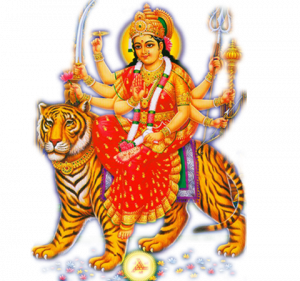 Navratri is a major Hindu festival celebrated throughout in India and Nepal. It is a festival dedicated to the Goddess Durga or Shakthi – a manifestation of the omnipresent energy of the universe. The word Navaratri in Sanskrit means nine nights (‘Nava‘ meaning ‘nine‘ and ‘Ratri‘ meaning ‘nights‘). The festival lasts for 9 nights and 10 days, and the nine forms of Devi or Goddess are worshipped during this time. Though Navaratri is observed 5 times in a year, those celebrated at the onset of summer and winter are having more importance. Sharad Navratri, the one observed at the beginning of autumn or the onset of winter is the most popular one which is commonly referred to as Navratri. Vijayadashami or Dussehra is observed on the tenth day of Sharad Navratri.
Navratri is a major Hindu festival celebrated throughout in India and Nepal. It is a festival dedicated to the Goddess Durga or Shakthi – a manifestation of the omnipresent energy of the universe. The word Navaratri in Sanskrit means nine nights (‘Nava‘ meaning ‘nine‘ and ‘Ratri‘ meaning ‘nights‘). The festival lasts for 9 nights and 10 days, and the nine forms of Devi or Goddess are worshipped during this time. Though Navaratri is observed 5 times in a year, those celebrated at the onset of summer and winter are having more importance. Sharad Navratri, the one observed at the beginning of autumn or the onset of winter is the most popular one which is commonly referred to as Navratri. Vijayadashami or Dussehra is observed on the tenth day of Sharad Navratri.
Navratri Special Sraswathi Mantras for Students
Navratri in Lunar Calendar
The dates of the Navratri festival are determined according to the lunar calendar. It is observed 5 times a year – Vasanta Navaratri, Ashad Navaratri, Sharad Navaratri, Pausha Navaratri and Magha Navaratri.
Vasanta Navratri falls on the month of Chaitra (March–April) and it marks the start of the new year in Hindu lunar calendar. It is observed during the waxing phase (Shukla Paksha) of Chaitra month.
Ashad Navratri is observed during the Shukla Paksha (waxing phase of moon) of Ashada month (June–July).
Sharad Navratri is the most important of the Navratris which is celebrated from the ‘pratipada’ (first day) of the bright fortnight (Shukla paksha) of the lunar month of Ashvin. It marks the beginning of winter (September – October) and is called Maha Navratri or simply Navratri.
Pausha Navratri is observed during the Shukla Paksha (waxing phase of moon) in the month of Pausha (December–January).
Magha Navratri falls on the waxing phase of moon in January–February.
All these Navratris are 9 day long observances with each day dedicated to different forms of Goddess Durga or Shakthi. The beginning of spring and the beginning of autumn are considered more sacred for worshipping the omnipresent energy ‘Mother Durga’.
Navratri Sale is On !! Get up to 61% OFF on Horoscopes!! HURRY!
9 forms of Maa Durga
The 9 forms or appellations of Goddess Durga or Shakthi as per various Hindu scriptures are the following.
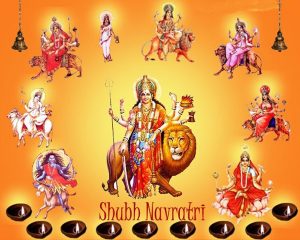
Shailaputri: Also known as Parvati or Himavati, she is the daughter of Himavan (king of Himalayas). The name literally means daughter of the mountains. A manifestation of the power or energy behind the Trimurtis, she is depicted as riding a bull and carrying a trident and a lotus.
Brahmacharini: The name literally means one who practices devout asceticism. She is the way to enlightenment or moksha and is depicted in a white sari, carrying a rosary and a water utensil.
Chandraghanta: She gives the strength to fight all evils. She is shown as having a golden complexion with 3 eyes and 10 hands. She rides a lion and carries weapons in her hands. She has a Chandra (crescent) on her forehead in the shape of a ghanta (bell) and hence the name Chandraghanta.
Kushmanda: She is the Goddess of the cosmic egg and is considered as the creator of the universe. She is depicted as having 8 hands holding weapons, rosary, lotus etc. and riding a tiger or a lion.
Skandamata: She is the mother of war, god Skanda or Kartikeya and hence the name Skandamata (‘mata’ means ‘mother’). The chief commander of Devas in their war against demons, she is depicted as having four arms and three eyes. The Goddess is shown as seated on a lotus or riding a lion and she holds the infant Skanda on her lap.
Navratri Sale is On !! Get up to 61% OFF on Horoscopes!! HURRY!
Katyayani: She is the daughter of Katyayana rishi, born in the Katya lineage of saints. The legend says that the saint wished to have the Goddess as his daughter and underwent long austerities to receive Mother Goddess’ grace.
Kaalratri: She is one of the fierce forms of Goddess Durga and is believed to be the destroyer of all evils and negative energies. She is depicted as having a fierce look with a dark complexion, disheveled hair and burning bright eyes. She rides on a donkey and carries a blood-drenched weapon.
Mahagauri: The name literally means extremely white. The Goddess is white in complexion and very beautiful. She is depicted in a white sari with four hands and riding on a bull. Her upper right arm is in the pose of allaying fear and lower right-hand holds a trident. She holds a damaru (tambourine) in her upper left arm and the lower left arm is in the form of a blessing.
Siddhidatri: Siddhi means supernatural power and Dhatri means the giver. She removes ignorance and gives the knowledge to realize Brahman or ultimate reality. She is depicted as seated on a lotus and is four-armed. She holds a lotus, mace, Sudarshana Chakra and conch shell on her four arms. It is mentioned that Lord Shiva worshipped her and was blessed with all 8 siddhis – Anima, Mahima, Garima, Laghima, Prapti, Prakambya, Ishitva, and Vashitva.
These 9 appellations of Goddess Shakthi are respectively worshipped on the 9 nine days of Navratri. Different poojas and observations are associated with each of these appellations. Yet, we can find variations in names and forms in different regions of India. The forms of Devi/Goddess worshipped vary with the regional traditions. Kali, Jagadamba, Annapurna, Sarvamangala, Bhairavi, Chandika, Lalita, Bhavani, Mookambika, etc. are some different names/forms worshipped during Navratri.
Navratri Celebrations in different regions.
Maha Navratri or Navaratri commences on the first day (pratipada) of the bright fortnight (Shukla paksha) of the lunar month of Ashvin. It ends with the Vijayadashami or Dussehra celebrations on the tenth day (Dashami) of the fortnight. The dates of the festival are determined according to the lunar calendar and may have some slight regional variations. Also, the different incarnations/names of Goddess worshipped depend on the regional traditions. Hence, in the ten-day celebration from pratipada to Dashami, the daily observances and the days of importance vary with different regions in India.
In the regions in North India, Chaitra Navratri and Sharad Navratri are widely observed. It includes fasting and worshipping the forms of Mother Goddess. The 9-day celebrations of Chaitra Navratri culminate in Ram Navami and that of Sharad Navratri in Durga Pooja or Dussehra. The Dussehra celebrations in Kullu, Himachal Pradesh is particularly famous.
In Bengal, the last 4 days of Sharad Navaratri are celebrated with much fervor. Those days are observed as Durga Pooja and it is the most important annual festival in the state. Idols of Goddess Durga slaying the demon Mahishasura are erected in temples and other places. These idols are decorated and worshipped during these four days and are immersed in the river on the fifth day (Dashami).
In Punjab, the Navratri festival is known as Navaratras or Naratey where the first seven days are for fasting. On the eighth day (Ashtami), devotees break their fasts by inviting young girls to their homes where they are treated as the goddess herself. They are called ‘Kanyak Devis’ and devotees ceremonially wash their feet, worship them and offer traditional delicacies along with bangles, red scarves and a token amount of money called ‘shagun’. Another practice during Navaratras is sowing seeds (pulses or cereals) in a pot on the first day and watering it for the nine days. This practice indicating fertility worship is known as Khetri. The pot is worshipped throughout the nine days, at the end of which the seeds get sprouted.
Navratri is one of the major festivals in Gujarat where devotees celebrate with dancing and singing. Every night of the festival is celebrated by performing Garba or Dayan Raas dance. Devotees conduct Durga Pooja and then accompany together to perform Garba with a live orchestra. For the past few years, the Government of Gujarat has been organizing the 9 days long Navratri celebrations where natives as well as people from abroad, take part.
In Goa, on the first day of the month Ashwin, devotees install a copper pitcher surrounded by clay in temples or houses. 9 varieties of food grains are sown in it. Devotees celebrate all the nine nights, reciting religious discourses and devotional songs. Also, they arrange a specially decorated swing called Makhar in which an idol of Goddess is placed and is swung according to the music played. This ritual accompanied by orchestra and lamps is called Makharotsav.
In Maharashtra, Ghatasthapana is celebrated from the first day of the month of Ashwin. Ghat arrangement includes an earthen pot filled with water and surrounded by clay in which food grains are sown and allowed to sprout for nine days. Five stems of jowar are also placed over the pot which completes the ‘Ghat’. Women devotees worship the pot for nine days, offering rituals and a garland of flowers, leaves, fruits, dry fruits, etc. Water is also offered to get the seeds sprouted.
Some people conduct Kali Pooja on days 1 and 2, Laxmi Pooja on days 3, 4, 5 and Saraswati Pooja on days 6, 7, 8 & 9 along with Ghatasthapana. A yajna or home is offered to Goddess Durga on the eighth day. On a ninth day, after the Ghat Pooja, it is dissolved by taking off the sprouted leaves of the grains. Some families invite a woman from Matang community and offer food. The woman is treated as a form of the Goddess and blessings are sought from her. On the occasion of Dussehra or Vijayadashmi, devotees worship iron utensils and weapons. The iron equipment is washed and leaves of Apta (called ‘sona’) and sprouted grains are offered. Vidyarambhan – the ceremony marking the beginning of children’s learning is also observed on this day.
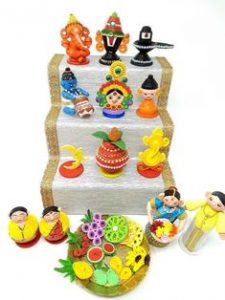 Arranging Kolu is an important Navratri observation in Tamil Nadu. It includes a step-like arrangement on which idols/dolls are displayed. The women in the neighbourhood invite each other to see the Kolu displays in their homes. They also exchange sweets. Conducting pooja, reciting slokas or hymns and offering food items to the Goddess is also a part of this observation. On the 9th day, Saraswati – the Goddess of wisdom is worshipped. Books, musical instruments, etc. are kept for pooja and worshipped. Ayudha Pooja or worship of vehicles and tools is another important observation on this day. All industries and mechanical shops in Tamil Nadu conduct Ayudha Pooja at their premises.
Arranging Kolu is an important Navratri observation in Tamil Nadu. It includes a step-like arrangement on which idols/dolls are displayed. The women in the neighbourhood invite each other to see the Kolu displays in their homes. They also exchange sweets. Conducting pooja, reciting slokas or hymns and offering food items to the Goddess is also a part of this observation. On the 9th day, Saraswati – the Goddess of wisdom is worshipped. Books, musical instruments, etc. are kept for pooja and worshipped. Ayudha Pooja or worship of vehicles and tools is another important observation on this day. All industries and mechanical shops in Tamil Nadu conduct Ayudha Pooja at their premises.
The 10th day or Vijayadasami symbolizes a new prosperous beginning devoid of all evils. New ventures started on this day are believed to flourish and kids are often let to start their education on this day. In the evening of Vijayadashami day, prayers are offered to thank God before dismantling the Kolu.
Navratri is celebrated as Dussehra in Karnataka. Ayudha Pooja on Mahanavami (ninth day) is a major observation here and whatever tools/instruments a person uses in his daily life or for his livelihood is kept for worshipping. Devotees believe that the new ventures started on this day can bring success.
The 10 day long Dussehra celebrations have a great fervor in Mysore. King Raja Wodeyar-I of Mysore has declared it as the official festival of the state in 1610. Colorful processions are organized here on the 9th and the 10th days of the festival. The traditional Dussehra procession on Vijayadashami (tenth day) is locally known as Jumboo Savari. During this procession starting from the Mysore palace, an image of Goddess Chamundeshwari will be carried on the back of a decorated elephant. A huge mass of people participates in this procession which also includes music bands, dance groups, elephants, horses, and camels. The procession ends at Bannimantapa where a banni tree is worshipped. The tenth-day celebrations end with a torchlight parade ‘Panjina Kavayatthu’ on the night of Vijayadashami.
The major Navaratri observation in Kerala is the worship of Goddess Saraswati from Ashtami (8th day) to Vijayadashami. It is observed at temples, homes, schools, and offices as well. Books are kept for worship on Ashtami and they are ceremoniously taken out on Vijayadashami after conducting the Pooja. Ayudha Pooja – the worship of tools and vehicles is also a major observation here.
Vidyarambham – initiating children into reading and writing is the most important Navratri observation in Kerala. The event is conducted at homes and temples where the priest or an elderly person initiates children to write ‘Om Harisree Ganapathaye Namah’ on a plate filled with rice. Millions of children are thus initiated into the world of letters and knowledge on Vijayadashami day.
In Telangana, a region of Andhra Pradesh, Navratri is celebrated as Bathukamma. Here, the 9 days are divided into sets of 3 days and the three different aspects of the supreme Goddess are worshipped. The three different aspects of the Tridevis are Durga, Lakshmi, and Saraswati. On the first 3 days, Durga or Kali is worshipped symbolizing the destruction of evils. On the next 3 days, Goddess Lakshmi is adored who bestows wealth and prosperity. In the final 3 days, Goddess Saraswati is worshipped to earn her blessings in our pursuit of knowledge. Thus we would find significant variations in Navratri celebrations in different parts of India. However, the core concept behind the celebration remains the same throughout; which is the worship of different aspects of the divine femininity of the supreme Goddess. In some places, the Dussehra celebration is a commemoration of the victory of Lord Ram over Ravana. Thus on Vijayadashami day, effigies of Ravana, Kumbhakarna, and Meghanada are burnt as part of the celebration.
Significances of Navratri
The Hindu concept of Durga or Shakthi is a manifestation of the omnipresent energy of the universe. She is the energy behind the creation, preservation, and destruction. During Navratri, we worship the different aspects of this energy and this agrees with the scientific fact that energy can neither be created nor be destroyed.
Hinduism gives much importance to the mother aspect of God. The universe or the world we live in has the qualities of a mother. Just as a mother loves, cares and gives all comforts to her children, nature provides everything for preserving life. The divine power controls the movement of celestial bodies. It makes the Earth rotate and revolve around the Sun; causing day and night and climatic changes, creating a perfect abode for sustaining life. Hence, we worship this energy as Mother Goddess.
We observe Navaratri at the beginning of summer and at the beginning of winter which are the two important junctures of climatic change. Our ancestors have chosen these occasions as the sacred opportunities for worshipping the divine energy.
Previous: Navratri: Facts and myths you should know!
Next: Dussehra (Vijaya Dashami), a celebration of the Good over Evil



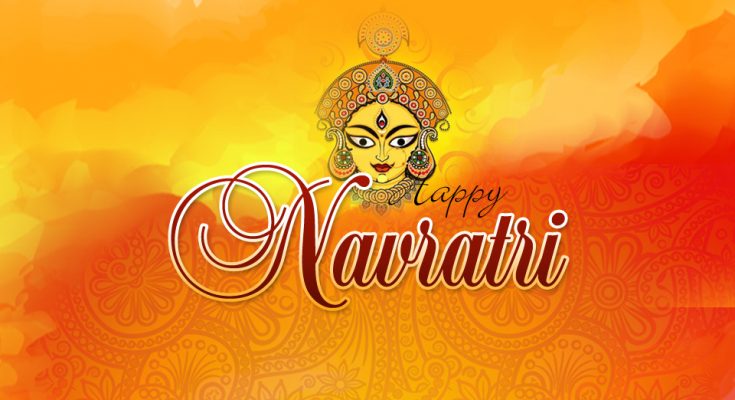


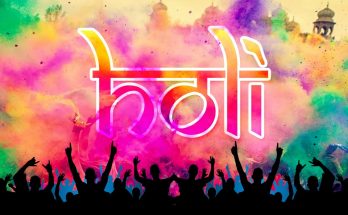

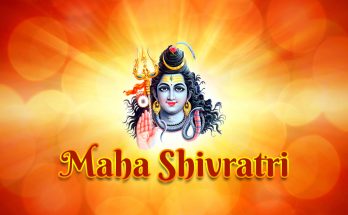

Navratris are most religious 9 days in the Hindu calendar which falls twice in a year. But those which fall in the Chaitra month carry more significance. People celebrate Navratri with full devotion and dedication. They follow pious activities and eat pure food.
Devotees worship 9 forms of goddess Durga in these 9 days.
One of the main activities that devotees follow in Navratri is the placement of Khatri. People place a Khatri in Navratri with religious factors. Khetri is “Jau (Barley)”.
The most important thing about all four Navratri puja around the year must logically be the detoxification of our body along with attaining spiritual bliss from Goddess. For the best way to detoxify our system, see Amrish Patel YouTube video on Chaitra Navratri fasting. Good health to all!